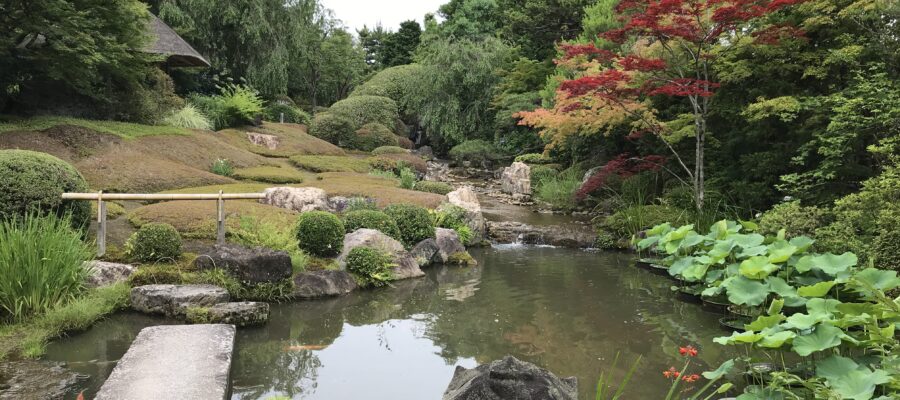中根金作が作った庭
退蔵院にはもう一つ、必見の庭園があります。中根金作が作った余香苑です。方丈を出て少し行くと、すぐに余香苑に続く細い道に入ります。その石畳の路を入っていくだけで、どんな世界が広がっているのか楽しみになってきました。
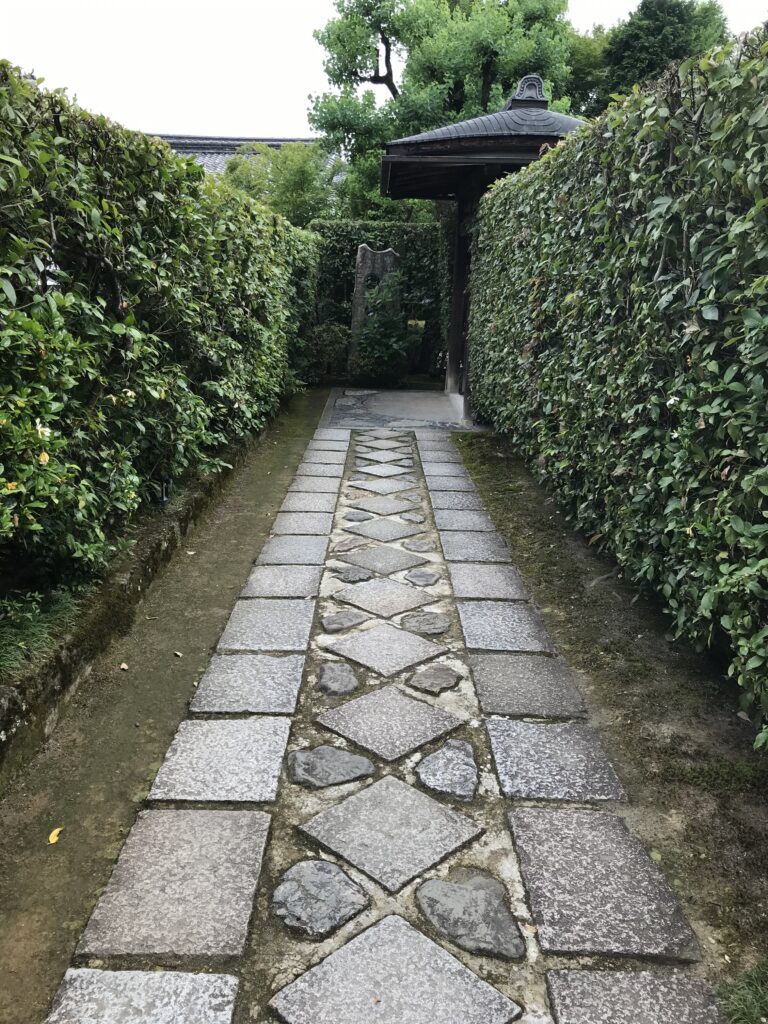
陰の庭と陽の庭
門をくぐると、正面に大きな枝垂桜の大木が出迎えてくれます。花の季節に来れば、どんな景色を見せてくれるのでしょうか。時すでに葉桜の季節で、緑の葉っぱに覆われていました。そこで右を向くと、陰の庭。すこしダークカラーの砂が敷いてあり、深い砂紋が描かれています。左を向くと、陽の庭。白砂が見る人を明るい気分にさせてくれます。訪れたときは、アジサイが咲く時期でした。
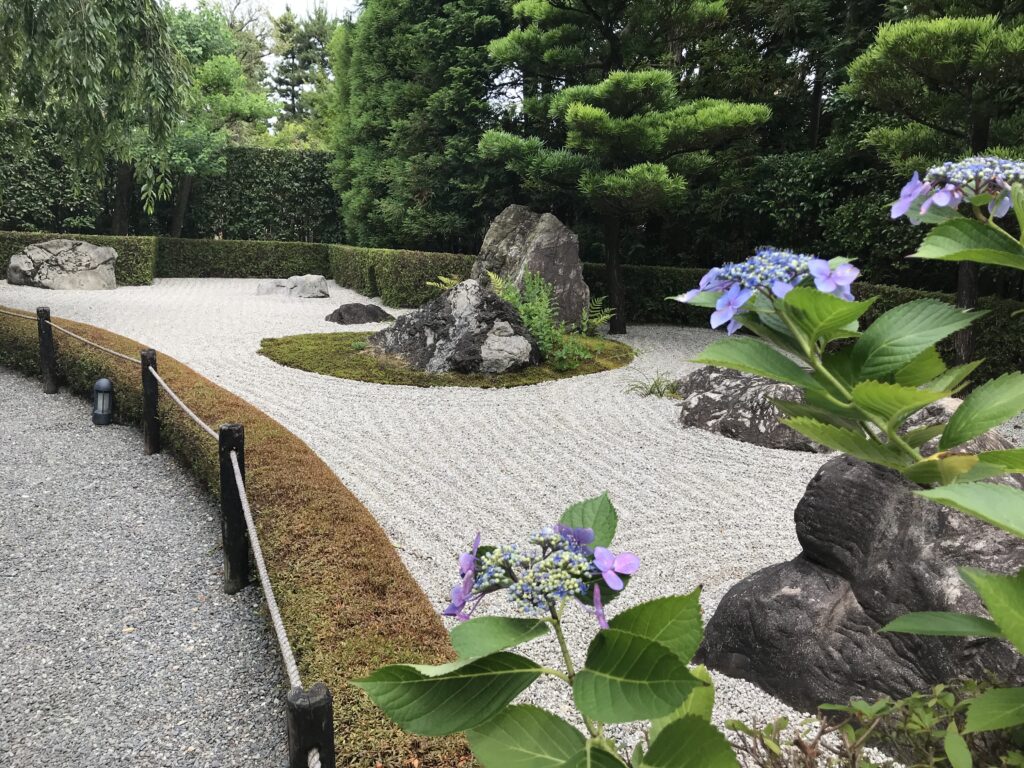
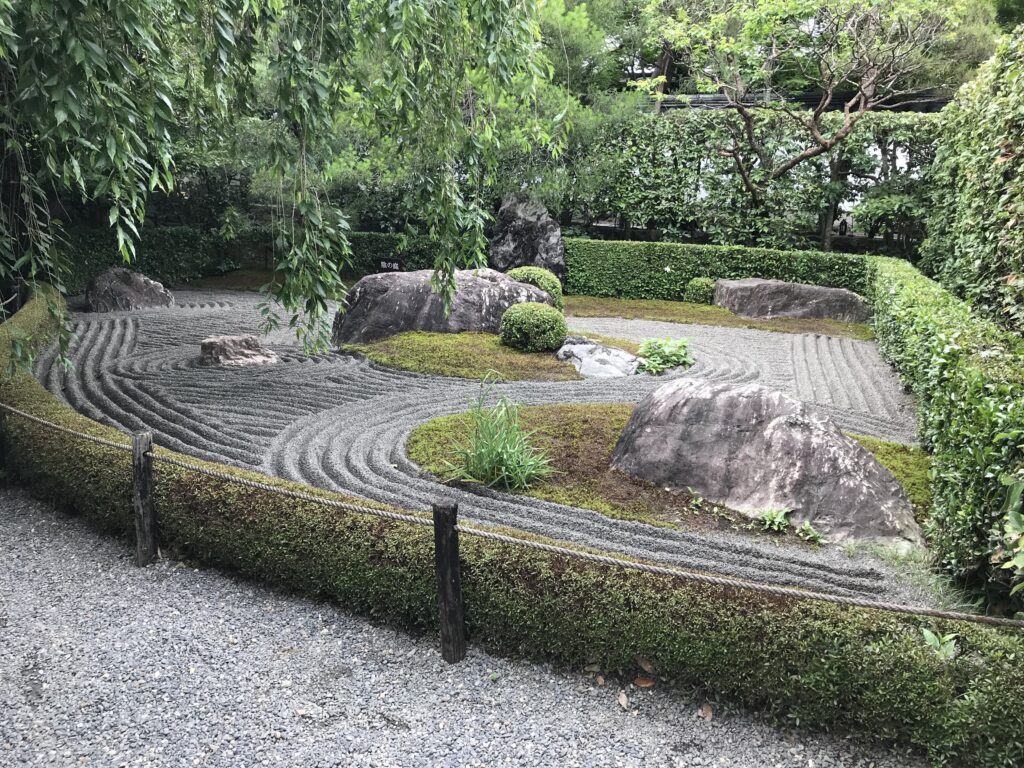
水が跳ねる音を楽しむ水琴窟
どんどん奥に入っていくと、水琴窟の立て札が見えました。どんな音がするのか、中に入って聞いてみました。柔らかく、そして涼しさを分けてくれそうな水の飛沫が飛び跳ねる音が響いています。夏の暑さを、音でやわらげる発想というのは、ある意味、独特なことと思います。風鈴もその一つでしょうか。逆に、寒さは音では柔らか無いのかなと考えてしまいました。
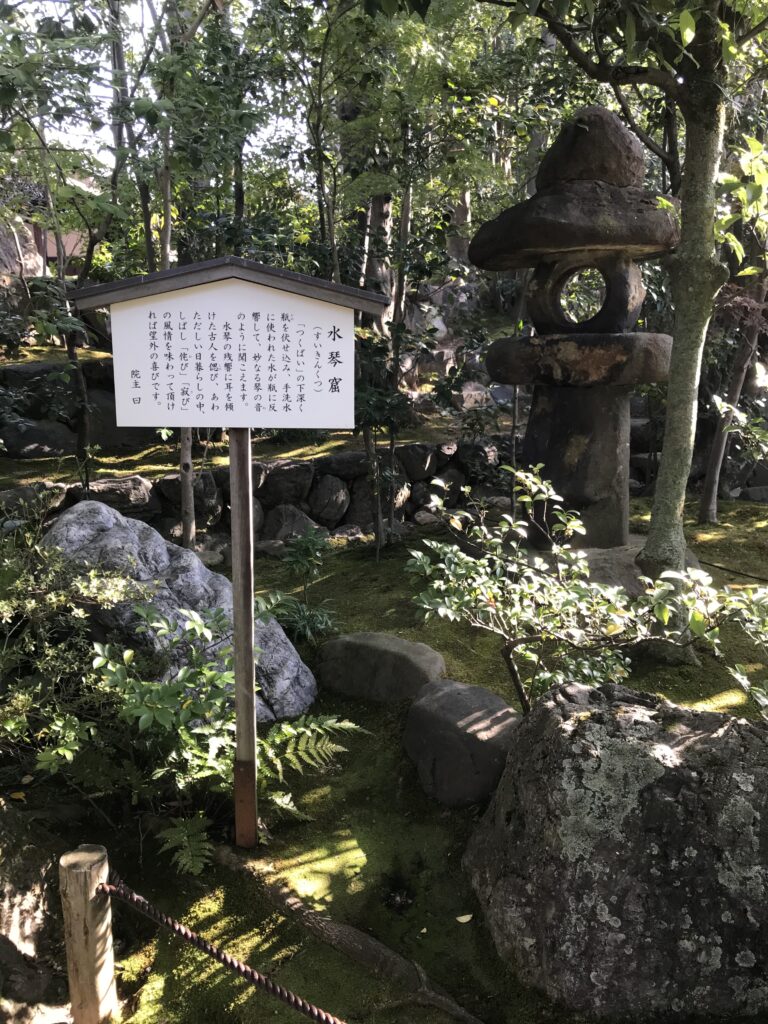
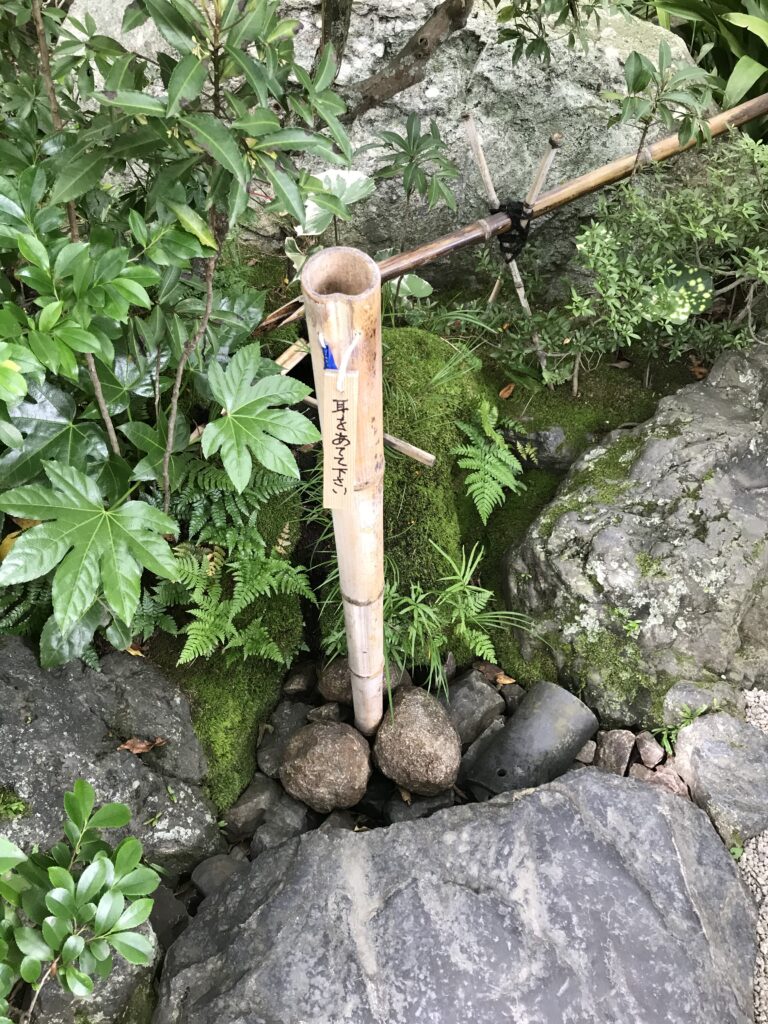
最高のView Point
更に奥に進んで、池を挟んで余香苑の庭全体を眺められる場所まで来ました。ここが一番のView Point という場所に座り、しばらく庭の景色を堪能していました。ここでは、遠近法ではないのですが、より奥行きがあるように見せる仕掛けがなされています。
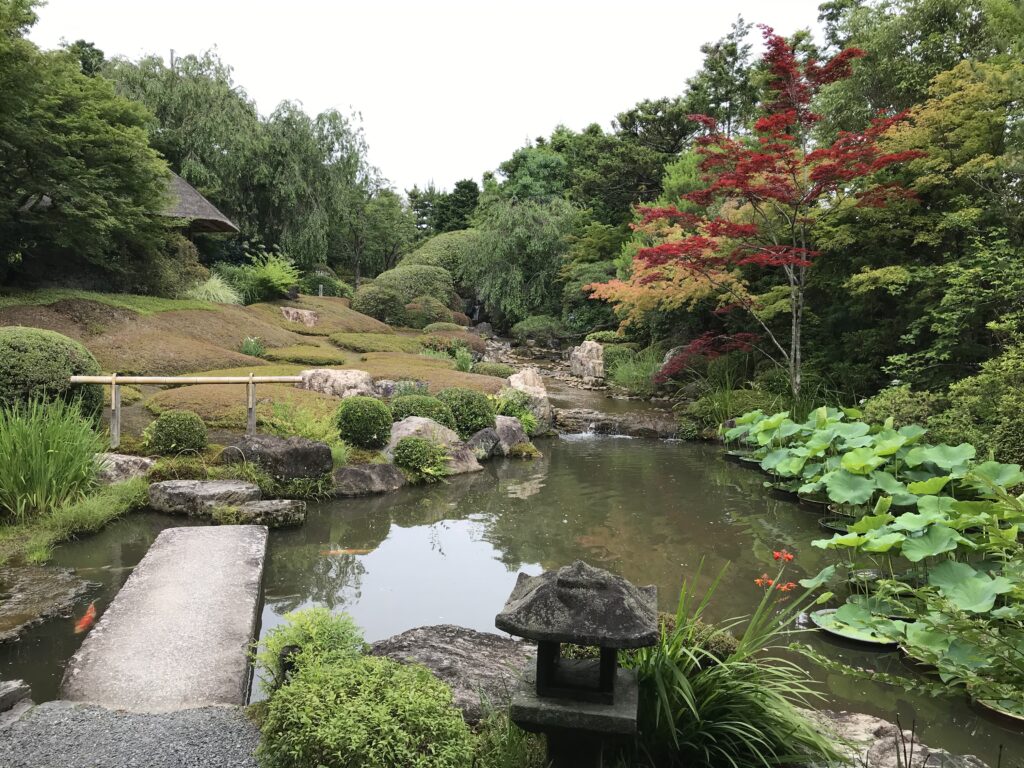
右側の水のせせらぎですが、奥の方が高さのある落差を用い、近づくと低い落差、そして、目の前の池に注ぎ込んできます。狭い高いところから、低い広いところに流れ込む様子を見せることで、実際以上に奥行きのある庭と、人間の目は認識するようです。また、植栽も同じような理屈で刈られています。写真を少し大きめに掲載しておきますので、ご自身の目でご確認ください。(完)
退蔵院の御朱印
退蔵院が紹介されている書籍
烏賀陽百合さんのしかけに感動する「京都名庭園」にて取り上げられています。
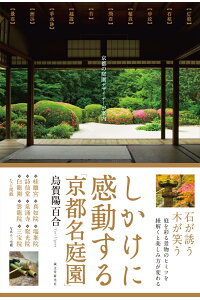
しかけに感動する「京都名庭園」 京都の庭園デザイナーが案内 [ 烏賀陽 百合 ]
価格:1,760円
(2021/5/2 18:44時点)
感想(1件)
Taizouin Temple (2) Yokoen Garden (English)
A garden created by Nakane Kinsaku
There is another must-see garden in Taizouin Temple. It is Yokoen Garden, created by Nakane Kinsaku. A short distance after leaving the Hojo (main building), you will soon come to a narrow path leading to the Yokoen Garden. Just by walking along the stone-paved path, I began to look forward to what kind of world would unfold before me.
The Garden of Yin and the Garden of Yang
As you pass through the gate, you are greeted by a large weeping cherry tree in front of you. I wondered what the scenery would be like if I came here in the flowering season. But it was already the season of leafy cherry blossoms, and it was covered with green leaves. So I turned to my right and saw a shady garden. It was covered with a little dark-colored sand, creating deep sand crests. Turning to the left, I saw a sunny garden. The white sand makes the viewers feel cheerful. When I visited, the hydrangeas were in bloom.
“Suikinkutsu” to enjoy the sound of water splashing
As I walked deeper and deeper into the temple, I saw a sign for a Suikinkutsu device. I went inside to listen to the sound. The sound of splashing water was soft and almost cool. The idea of using sound to ease the summer heat is, in a sense, unique. I guess wind chimes are one of them. On the other hand, I wondered if coldness of winter could not be softened by sound.
Best View Point
I went further into the garden and came to a place where I could see the entire garden of the Yokoen across the pond. I sat down at what I thought was the best view point and enjoyed the scenery of the garden for a while. The garden is not in perspective, but it has been designed to look like it has more depth.
The stream of water on the right side of the picture uses a high drop at the back, a lower drop as the stream approaches, and then pours into the pond in front of you. By showing the water flowing from a narrow, high place to a low, wide place, the human eye seems to perceive the garden as having more depth than it actually has. The plants are also trimmed with the same logic. I’ll post a slightly larger photo so you can see for yourself. (End)
Temple Taizouin (2) Jardin Yokoen (Français)
Un jardin créé par Nakane Kinsaku
Il y a un autre jardin à voir absolument dans le temple Taizouin. Il s’agit du jardin Yokoen, créé par Nakane Kinsaku. Peu après avoir quitté le Hojo (bâtiment principal), vous arriverez à un chemin étroit menant au jardin Yokoen. Rien qu’en marchant le long de ce chemin pavé de pierres, j’ai commencé à me demander quel genre de monde allait se présenter à moi.
Le jardin du Yin et le jardin du Yang
Lorsque vous franchissez la porte, vous êtes accueilli par un grand cerisier pleureur devant vous. Je me suis demandé à quoi ressemblerait le paysage si je venais ici pendant la saison de floraison. Mais c’était déjà la saison des cerisiers en fleurs, et il était couvert de feuilles vertes. J’ai donc tourné sur ma droite et j’ai vu un jardin ombragé. Il était couvert d’un peu de sable de couleur sombre, créant des crêtes de sable profondes. En me tournant vers la gauche, j’ai vu un jardin ensoleillé. Le sable blanc rend les spectateurs joyeux. Lors de ma visite, les hortensias étaient en fleurs.
“Suikinkutsu” pour apprécier le bruit des éclaboussures d’eau.
En m’enfonçant de plus en plus dans le temple, j’ai vu un panneau indiquant un appareil Suikinkutsu. Je suis entré à l’intérieur pour écouter le son. Le son des éclaboussures d’eau était doux et presque frais. L’idée d’utiliser le son pour atténuer la chaleur de l’été est, en un sens, unique. Je suppose que les carillons à vent en font partie. D’un autre côté, je me suis demandé si la froideur de l’hiver ne pouvait pas être adoucie par le son.
Meilleur point de vue
Je suis allé plus loin dans le jardin et je suis arrivé à un endroit où je pouvais voir tout le jardin du Yokoen de l’autre côté de l’étang. Je me suis assis à ce que je pensais être le meilleur point de vue et j’ai profité du paysage du jardin pendant un moment. Le jardin n’est pas en perspective, mais il a été conçu pour donner l’impression d’avoir plus de profondeur.
Le ruisseau d’eau sur le côté droit de l’image utilise une haute chute à l’arrière, une chute plus basse à l’approche du ruisseau, puis se déverse dans l’étang devant vous. En montrant l’eau s’écoulant d’un endroit étroit et élevé vers un endroit bas et large, l’œil humain semble percevoir le jardin comme ayant plus de profondeur qu’il n’en a en réalité. Les plantes sont également taillées avec la même logique. Je vais poster une photo un peu plus grande pour que vous puissiez voir par vous-même. (Fin)
